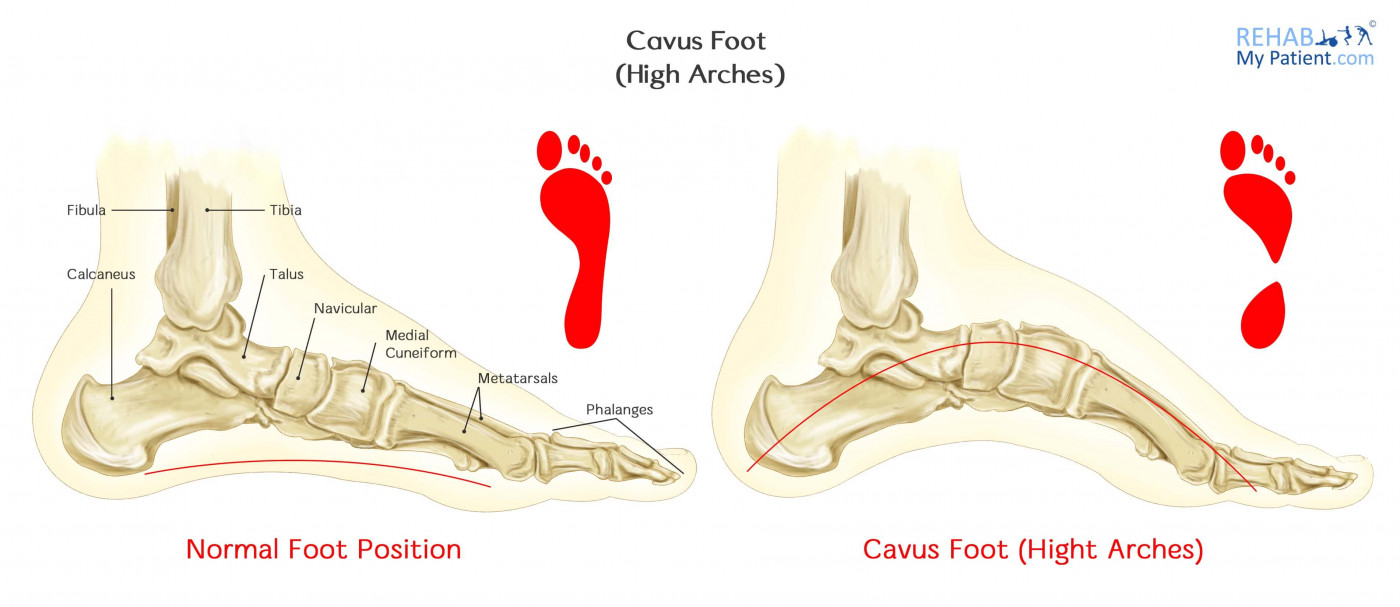High Arched Foot
Posted on 17th Nov 2017 / Published in: Ankle

Cavus foot is a type of condition where the foot has a very high arch. Due to the high arch, a tremendous amount of weight is placed onto the ball and the heel of the foot whenever standing or walking. The condition leads to a number of different symptoms and signs which can affect the foot, ankle, knee, hip and spine. It tends to be present at birth but only noticed later in adulthood. Once considered a sign of the aristocracy, it is now just considered a biomechanical problem. A high arch can also (and less commonly) be caused by a neurological disorder or other types of medical conditions.
High arches in themselves may or may not cause a problem. As the body has compensated for it over a number of years, some experts strongly advocate just leaving it as it is. But the high arch can affect force transmission in the foot, causing issues in other joints in the legs such as ankles knees and hips.
High Arched Foot Anatomy
The foot tends to be a complex structure located at the end of the leg. It is composed of more than 33 joints and 26 bones. It provides balance, assists in mobility and performs a number of other different essential functions for humans. The shape, along with the natural balance-keeping systems in the body, make humans capable of running, walking, climbing and a host of other activities. The structure of the foot is similar in nature to that of the hand. Since it bears additional weight, it is less mobile and a lot stronger.

How to Treat a High Arched Foot:
- Orthotic Devices
Custom orthotics that fit into your shoes are quite beneficial because they provide you with cushioning and stability for the foot.
- Shoe Modifications
High-topped shoes help provide support for the ankle. Shoes that have heels that are a little wider on the bottom will provide you with a sense of stability.
- Bracing
Surgeons might recommend bracing to help keep the ankle and foot stable. It also tends to be quite useful in managing any foot drop.
- Surgery
When non-surgical treatment fails to provide pain relief and improve overall stability, surgery might be necessary to decrease pain, compensate for foot weakness and increase stability. The best procedure will be determined based on your individual case. In certain instances where a neurological problem exists, surgery may be needed down the line to help slow the disorder progression.
Tips:
- Most of the time, cavus foot is often hereditary and you are born with it.
- Determine what type of foot structure your siblings and parents have to see if you are prone to developing any pain or problems with your lower limbs.
- Spina bifida and muscular dystrophy tend to make individuals more prone to the condition as the muscles weaken.
- Weak calf muscles can cause the condition depending on the biomechanics involved.
- Seek help from your sports therapist or podiatrist to advise you on the best course of action.
- The high arch can naturally drop with age.
Sign UP
Sign up for your free trial now!
Get started with Rehab My Patient today and revolutionize your exercise prescription process for effective rehabilitation.
Start Your 14-Day Free Trial